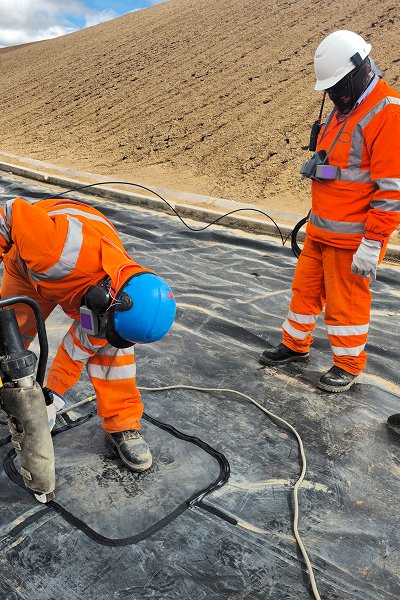Geotextile is a permeable geosynthetic material made of synthetic fibers (such as polyester and polypropylene). It can be divided into two categories according to the manufacturing process: woven geotextile and non-woven geotextile.
Woven geotextile is made of parallel fibers interwoven, with high tensile strength and stability, suitable for projects with high bearing capacity requirements;
Non-woven geotextile is formed by fibers through needle punching or thermal bonding process, with large porosity and good water permeability, suitable for places requiring good drainage performance.
According to different engineering requirements, the type, specification and performance of geotextile can be flexibly selected to achieve specific reinforcement and functional goals.


The role of geotextiles in soil reinforcement
Reinforcement is one of the most important functions of geotextiles. By laying high-strength geotextiles inside or at the boundary of the soil, the overall stability and bearing capacity of the soil can be significantly improved.
Working principle:
Geotextiles exist as "tension membranes". When external loads act on the soil, the geotextiles can share part of the load and reduce the shear stress concentration of the soil;
The tensile strength of the geotextile can limit the lateral deformation of the soil and enhance the integrity of the structure;
Laying geotextiles on soft soil foundations can form a "floating cushion effect", effectively dispersing and transferring the upper structure load, reducing settlement and uneven settlement.
Separation
Geotextiles can effectively isolate soil or fillers of different properties, such as separating coarse-grained materials from fine-grained soil to prevent particle migration and mixing.
Effects:
Maintain the independence of the structural layer and avoid mutual erosion between different soils;
Ensure the long-term stability of the drainage layer and reinforcement layer;
Improve the long-term effectiveness and reliability of the reinforcement system.
Drainage
Geotextiles have good water permeability, which can promote the discharge of water from the soil and prevent the reduction of soil strength and deformation caused by water retention.
Application scenarios:
Drainage of embankments and road slopes;
Underground drainage systems;
Drainage channels in closed spaces such as landfills and tunnels.
Filtration
While preventing fine soil from being lost with water, geotextile allows water to pass through, acting as a filter layer.
Functional principle:
The pore size of geotextile is controlled within an appropriate range, which can not only intercept fine soil but also not affect the passage of water;
It can effectively prevent soil and water loss phenomena such as "pipe burst" and scouring;
Protect the foundation of the structure and extend its service life.

Application of geotextile reinforcement technology
Interlayer paving method: In soft soil foundation or filled roadbed, geotextile is horizontally laid between two layers of soil with different properties, such as gravel and clay, to play the role of isolation, reinforcement and drainage.
Vertical insertion method: In slope or retaining wall reinforcement, geotextile can be used as "reinforcement" to be vertically inserted into the soil to form a joint reinforcement system with the wall or supporting structure.
Multi-layer composite laying: Combine multiple layers of geotextile or use it in combination with other geosynthetics (such as geogrids and geomembranes) to form a comprehensive reinforcement system to improve the comprehensive performance of the soil.


